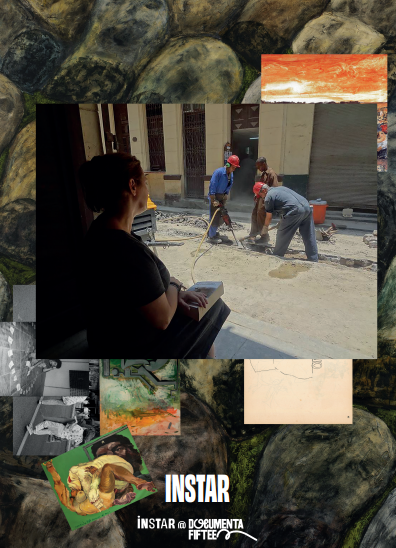-
EXHIBITIONS
General information text
-
OPERATIONAL FACTOGRAPHY
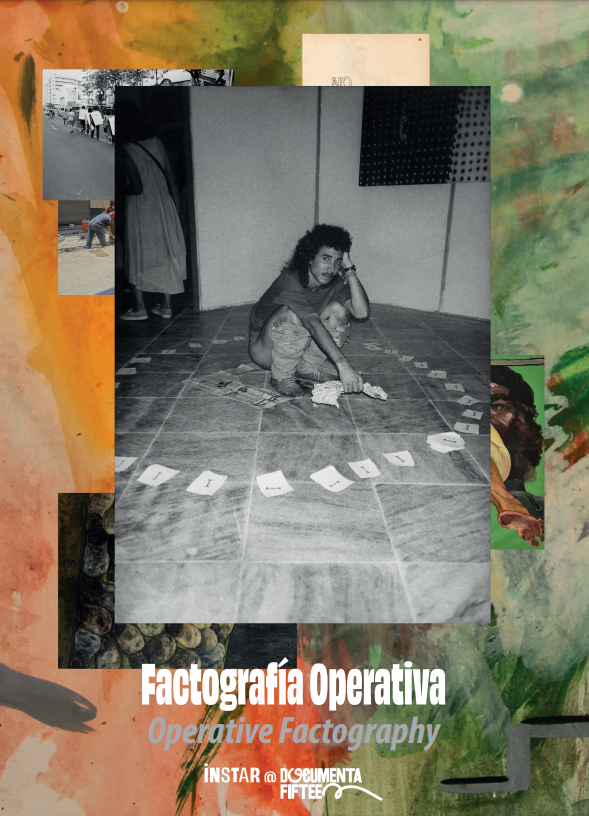
Duration: June 18th - June 28th 2022
Operators: Clara Astiasarán, Tania Bruguera, Ernesto Oroza Artists in the exhibitions: Gorky Aguila, Amegla, Ingrid Behety, Miguel Camacho, Raychel Carrión, Alberto Casado, Annelys PM Casanova, Liliam Dooley, Darwin Fornés, Víctor Fung, Hidalgo Holg, Yoel Jiménez, Hamlet Lavastida, Julio Llópiz Casal, Camila Lobón, Claudia Patricia Olivera, Daniel Plutín, Marwin Sánchez, Eric Silva, Armando Tejuca, Annick Woungly
Contributors: CUBALEX, Proyecto Inventario, elToque, Justicia 11J
Operative Factography is a methodology that was developed in the 1920s by the Soviet poet Sergei Tretiakov. The method is based on the recording and display of the activities of a community in order to stimulate a collective analysis. The recordings, displayed in a public space and in the form of a mural-newspaper, permit the organization and planning of the activities of the aforementioned community; this last step makes factography an operational tool.
The operative factographic process set up in Kabinett 1 of Documenta Halle gives an account of the activities of INSTAR from the moment of its invitation to participate in Documenta up to the present. More than an exhibition, this space operates as a platform that—complemented by the public programming—is meant for other lumbung members, cultural actors and Documenta’s audience to debate the current conditions of cultural production in Cuba and, specifically, the difficult political and social reality in which INSTAR carries out its work.
The space has been organized around a timeline of events made up of drawings by Raychel Carrión who, in the manner of a diary, reacted to news and happenings in Cuba over the last two years. This grants the display of the contents in the space a quasi-chronological character. Another of the fundamental elements of this factographic staging is a map of Cuba that indicates the locations where the popular and massive protests against the regime took place on the 11th of July, 2021. The map was created by Inventario, a data-news project. CUBALEX, elToque, and Justicia 11J have been means to, and mediums for, useful information, denunciations, and legal advice for the Cuban people, on and off the island, and especially during the last two years. The statistical data in the space are provided by Inventario and CUBALEX. From the latter, we are also showing a series of legal advice for dealing with arbitrary detentions and police harassment. A selection of didactic videos created by elToque serves to clear up conceptual and legal doubts about the new laws/decrees that restrict freedom of speech. The Justicia 11J project provides data about, and monitors, the legal processes of the protestors detained by the political police on the 11th of July.
In addition, the space also gathers the visual materials developed by Claudia Patricia Olivera, INSTAR’s designer. These materials reveal the actors, anxieties, and issues that became part of the public debate, as well as the public campaigns from the last two years that were created under INSTAR. A sequence of posters, visual posts and t-shirts created by Cuban artists for social media are also exhibited; these help recount the most recurrent themes: liberating political prisoners, rejecting the laws/decrees that threaten freedom of expression, confronting the lies of the dictatorship and its campaigns of public manipulation—all of which reached their loudest expression on the 11th of July.
The accumulation of sources of information that functioned simultaneously—and on occasion as alliances between activists—is at work here, in turn, as a rhetorical resource. This one, which is the first of a sequence in 10 mise-en-scènes, is perhaps the one with the most pedagogical character, not only due to the information gap that exists with respect to Cuba, but also because civic education is one of INSTAR’s objectives.
CURATORS GO HOME
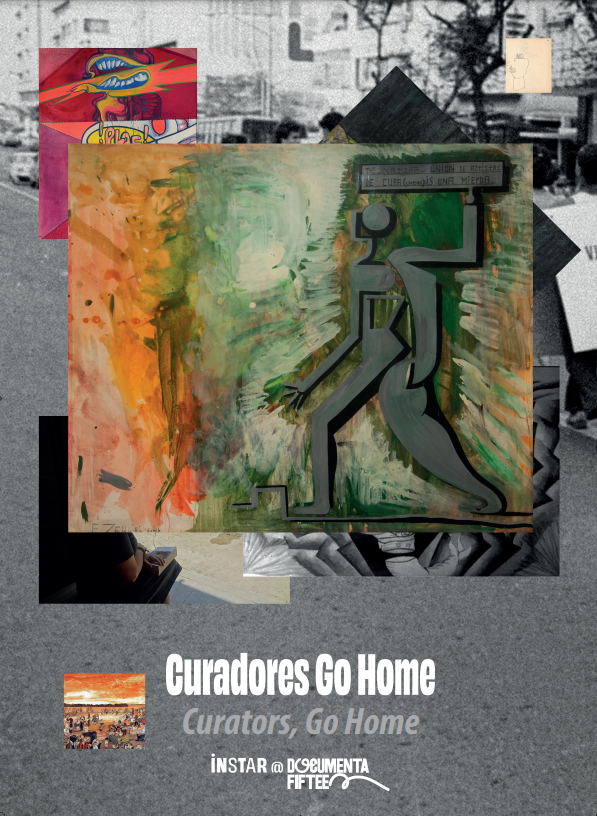
Duration: June 18th - July 8th 2022
Operators: Clara Astiasarán, Tania Bruguera, Ernesto Oroza Artists in the exhibit: Sandra Ceballos / Ezequiel Suárez / Artists from the 2008 Curadores, Go Home exhibition / Armando ‘Chago’ Armada
In 1994, cultural officials from the Cuban government censored some of the works in Ezequiel Suárez’s show, El Frente Bauhaus, as they were being installed in Havana’s Galería 23 y 12. Suárez and Sandra Ceballos—a fellow artist and the show’s curator—decided not to accept the removal of the works, thereby refusing to become yet another of the decade’s censored shows. Instead of adjusting the exhibition by removing the censored works, they gathered up all of the works, installed them at home, and invited their friends there for the opening of the full show.
With this firm, spontaneous, and rebellious gesture, they initiated the first independent art exhibition project in Cuba, which they called Espacio Aglutinador. Given the iron grip of the Cuban regime on public space as well as its monopoly over cultural institutions, Espacio Aglutinador’s strategy succeeded in transforming private space into an alternative public space for censored artists. This took the Cuban regime by surprise; in response, the regime created mechanisms of harassment for the founders as well as police and institutional pressure for their artists and potential spectators. Espacio Aglutinador is the country’s longest-living project for the exhibition of independent artists. It has been the alternative for many artists censored and forgotten by institutions, including those Cuban artists in exile, and some foreign artists as well.
In 2018, the President of Cuba signed into law Decree-349 which invalidates and penalizes the use of private spaces for artistic events that do not have the Ministry of Culture’s permission. Even under these conditions Espacio Aglutinador has continued operating. Ezequiel Suárez left the project in 1999; Sandra has continued putting together exhibitions and organizing events at Espacio Aglutinador to date.
INSTAR has invited Espacio Aglutinador to bring to light a type of independent production that seeks routes alternative to the institutions and proposes other dynamics of cultural legitimation.
The aesthetic resource offered by INSTAR for documenta fifteen is a reconstruction, through facsimile, of the memory of cultural events and processes that did not, and do not, depend on the exclusionary mechanisms imposed by the Cuban government. For the reconstruction of this facsimile, we selected all the photos from the archive of exhibitions carried out at Espacio Aglutinador. On top of this accumulation of documentation, we see images of the exhibitions dedicated to the works of Chago Armada, an artist and designer that experienced the censorship of the 1960s and whom Espacio Aglutinador helped recover. The other exhibition to which we refer—and from which we borrowshow. For this project, Sandra invited artists to install any works they desired in the space an our title—is Curadores, Go Home. We are exhibiting the manifesto Ceballos wrote for that d, with this decision, radically questioned the role of curators in the so-called system of art, as well as the role of the cultural agents of the governing apparatus of Cuba. This exhibit includes a collective mural/performance for whose realization artists and visitors were asked to write the names of censors, to mention events and experiences with censorship, and to name censored creators.
In the space we find Ezequiel Suárez’s work Ejercicio de clase #23, one of the censored works that gave rise to Espacio Aglutinador in 1994. The works of Sandra Ceballos—created specifically at INSTAR’s invitation—complete the room.
LAND WITHOUT IMAGES
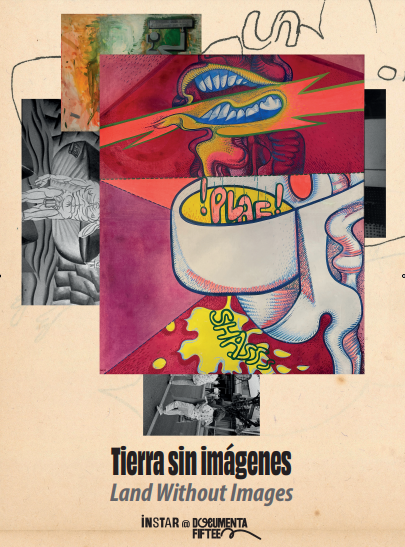
Duration: July 8th - July 18th 2022
Operators: Clara Astiasarán, Tania Bruguera, Ernesto Oroza
Guest Projectionist: José Luis Aparicio
The Cuban audiovisual archive, hegemonically governed by official institutions since 1959, is a compendium of censorship and omissions. A history of Cuban cinema would be incomprensible without these absences; without those films that were denied or lost. In the words of the filmmaker and civil servant Julio García Espinosa: “a country without images is a country that doesn’t exist.” García Espinosa, ironically, was responsible for some of the most traumatic cases of censorship at the Instituto Cubano de Arte e Industria Cinematográficos (ICAIC, Cuban Institute of Cinematographic Art and Industry), the first cultural institution founded following the Cuban Revolution, just a few months later. A paranoid reading of these words would appear to endorse the attempt to nullify certain ideas or versions of the country via the control and highjacking of an important portion of its imaginary. A country that isn't filmed is a country that does not exist. For long decades, their almost absolute monopoly of the means of production and the subsequent asphyxiation of any dissent enabled to ICAIC to produce a distorted image of the island. Any divergent or anomalous vision was purged. No heresy went unpunished. In a now cyclical process of self-destruction, filmmakers who don’t play by the rules are punished with prison, ostracism or exile. Their films, or those that survive, are consumed by neglect and oblivion.
The way out, though banned and precarious, can be found in independent film. A movement that they systematically try to break, but which always finds ways of subsisting and regrouping. That often operates at the margins of the law, harassed and unprotected. Its increasing consolidation since the 1990s and 2000s, is one of the most remarkable acts of resistance in contemporary Cuban culture. Cuban films participate and win awards in festivals such as Berlín, Sundance, Locarno, San Sebastián and the IDFA, something that the ICAIC itself has not achieved in recent decades.
Transforming Documenta Halle’s Kabinett1 into a movie theater speaks to the chronic displacement faced by the industry, many times left to be consumed in private, intimate spaces, with minimal resources such as small screens and precarious sound. In large part the materials compiled in this archive—many censored and most alternative or independent productions—have circulated furtively, passed from one person to the next. If to list these films is to make the archive, to make the cinema is to make a temporary center for their consumption and study. The archive Land without Images will be camped out here at Documenta Halle for ten days. With daily programming of approximately 100 hours and over 150 films, it recovers that Cuba that was taken from us in some of its most powerful visions.
TEH JÚCARO MARTIANO PEÑA
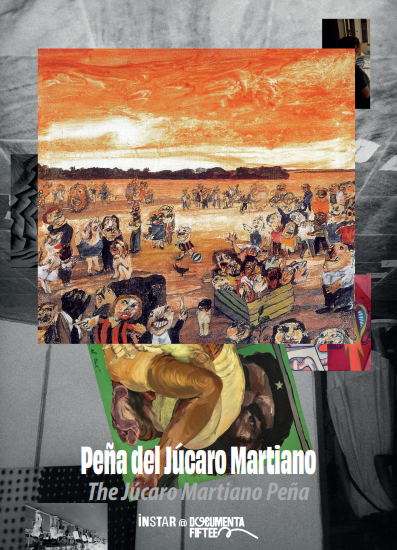
Duration: July 18th - July 28th 2022
Invited Operario: Joaquín Badajoz
Operators: Clara Astiasarán, Tania Bruguera, Ernesto Oroza
Artist in the exhibit: Pedro Pablo Oliva
Peña del Júcaro Martiano is one of the oldest and still-active independent projects in Cuba; it was created in 1995 in the province of Camagüey. It was initiated under the protection of the Catholic church, but due to conflicts with the political police, its creators found themselves obliged to change their headquarters in the year 2000 to the house of the poet Rafael Almanza. This space, a meeting place for intellectuals, artists, and researchers, has a strong pedagogical character that stimulates debate and promotes the desire for knowledge of Cuba's history. The culmination of all the activities throughout the year is always a tribute-event to José Martí, the l9th Century poet and national hero of Cuba. The name Peña del Júcaro comes from the activities the group performs and the tree under which José Martí was said to have rested (the Júcaro) when he passed through Camagüey.
Literature has been one of the most censored artistic practices in Cuba. Printed content and its circulation have been systematically prohibited and penalized; the production and distribution of all printed material is under the complete control of the regime. Nevertheless, in the last decades some writers began to circulate their work through digital newsletters via email. Afterwards, they made incursions into blogging with which they managed to make an impact and achieve a broad dissemination of their texts. In recent years, there has been a more frequent development of independent editorial and literary projects; these circulate on the island primarily in digital formats, though there are a few that offer print versions outside of Cuba. These independent publications, even with their limited resources, surpass in popularity the products of the publishing houses of the Ministry of Culture, which are controlled by the regime. Through their practice, these independent publishing houses have established new parameters for the circulation and legitimation of literary and academic production about Cuba beyond the regime's control. Independent publications, which include journali sm, are more and more becoming sources for academic reference and information; they have become tributaries of an informal historical record, filling the informational gaps left intentionally by the official media that is controlled by the regime.
INSTAR is inviting the magazines Hypermedia Magazine, No-Country Magazine, and Mujercitos to create a special issue for documentafifteen.
TO THE BITTER END
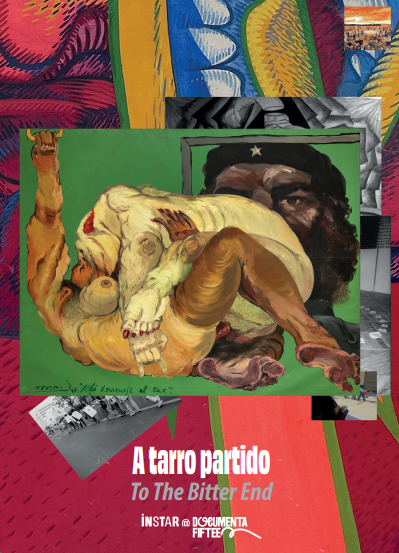
Duration: July 28th - August 7th 2022
Invited Operarios: Gean Moreno and Natalia Zuluaga of [NAME]
Operators: Clara Astiasarán, Tania Bruguera, Ernesto Oroza
Artist in the exhibit: Ernesto Leal
To the Bitter End: Civic Practices in Cuba at the Beginning of the 21st Century begins to map a series of collectives, networks, and cultural spaces that came together in Cuba during the last two decades, either fully independent from or increasingly moving away from institutional oversight and support. These collectives formed around the need to generate new political imaginaries deeply connected to environmental practices, gender and racial struggles, necessary renewals of emancipatory thinking, new communicative opportunities afforded by digital technologies, and, in a few cases, ancestral knowledges. Where the groups gathered here are distinct from the opposition that Cuban institutions have faced in the past lies in their refusal of a liberal restructuring of society. Instead, they align themselves with anarchist ideals of statelessness, horizontal structures, mutual aid, egalitarian distribution of social benefits, and the destruction of the value-form. The critical space that these collectives managed to pry between old style dissidence and institution, between defunct revolutionary pasts and neoliberal proliferation, is the result of the manner in which they changed the imaginaries of the future by meticulously and collectively working on socialist and libertarian (in the anarchist sense) counterhegemonies, by holding fast to the notion that another world is, indeed, possible.
To The Bitter End is an attempt to activate the memory of these collectives and their activities. The mapping of a network of civic practices that this exhibition begins to develop is the outcome of several encounters, conversations, and revisions between [NAME]—a non-profit organization based in Miami, US, whose projects have an emphasis on histories and practices often marginalized in dominant art and design histories—and various participants who were integral to the collectives. The exhibition is grounded by a map, made in conversation with Isbel Diaz Torres, who founded Guardabosques (Forest-Keeper) and participated in numerous other initiatives, later supplemented by Otari Oliva Buadze of Locación Cristo Salvador; revised by Mario Castillo and Dimitri Sansonov, central voices in Observatorio Critico (Critical Observatory), and Hilda Landrove, who was part of Voltus V (collective) and later participated in numerous other collectives. At the risk of turning the situated engagement with an specific empirical context that characterized these liberatory practices into the kind of political imaginaries that the contemporary art world over-fetishizes and devours, the exhibition offers only testimony by presenting bulletins, zines, images, artworks, video documentation, and correspondence that serve as proof of a handful of the many practices that took shape during this period.
OMNI
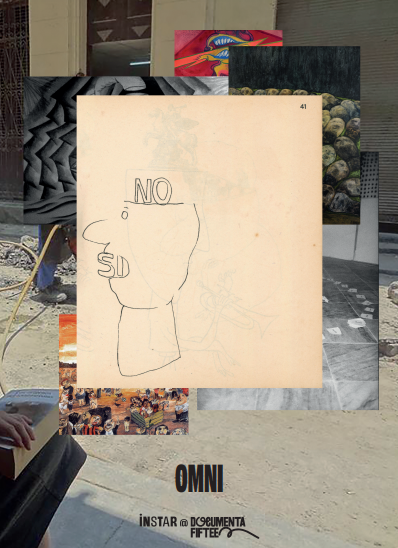
Duration: August 7th - August 17th 2022
Operators: Clara Astiasarán, Tania Bruguera, Ernesto Oroza
Artists in the exhibition: Amaury Pacheco and David D’Omni
This exhibition accounts for one of the most fruitful and unorthodox collaborative and social practices in the Cuban art scene. OMNI-ZONA FRANCA is a collective that arose by merging two projects: OMNI, which brought together artists and artisans, and ZONA FRANCA, created by poets and performers Amaury Pacheco and Juan Carlos Flores, pioneers of experimental poetry in Cuba. These creatives from different disciplines—including musicians, actors, theater directors, audiovisual creators, designers, etc.—all lived in the same peripheral urban sector of Havana called Alamar, which the poet Juan Carlos Flores described as “the heart of the Russian Quarter,” referring to the Soviet-style architecture designed for working-class neighborhoods.
With a practice rooted in the city and its community, OMNI ZONA FRANCA (OMNI FREE ZONE) became a catalyst for the vital social problems that began to progressively affect Cuban society. By attempting to contain the anthropological and social deterioration of Alamar, this practice, which was not fully recognized by official legitimation channels, led to a phenomenon of sociocultural awareness. These activities, organized in workshops, at bus stops and schools, in unexpected forms and formats, led to their persecution by repressive government forces. Faced with constant harassment and the delegitimization of their artistic practice, many members left the country. Those who still live in Cuba are considered dissidents and their status as artists has been “removed” by the regime, a common practice with censored artists over the last 60 years.
This exhibition reflects the two founding figures of OMNI-ZONA FRANCA who still live on the island, Amaury Pacheco and David D’Omni, in two parts. One is a moment of historiographic record and the other a reenactment of a selection of performances by the pair or by the others in the group. The reenactment pertains to urban areas, means of public transportation, and migrant organizations and/or communities (ruruHaus) in the city of Kassel. Amaury Pacheco has deemed his practice “Operative Poetics,” for his commitment to the community and the contexts he works in. His concept is in line with INSTAR’s theme of Operational Factography at documenta 15. Juan Carlos Flores used to visit Amaury Pacheco almost daily, until the clock struck 9 pm and he would return home to write and read. Amaury, who has kept some of Juan Carlos’ personal belongings, recalls that the clock continued to chime until it ran out of batteries; he calls that moment “Juan Carlos time.” Juan Carlos took his own life in 2016. In homage to him, the exhibition includes a homonymous program with readings every day at 3 pm Kassel time of works by Juan Carlos Flores and other Cuban poets who committed suicide, including Calvert Casey, Raúl Hernández Novás, Reinaldo Arenas, and Angel Escobar.
OMNI ZONA FRANCA:
Amaury Pacheco del Monte
Luis Eligio Pérez Meriño
David Escalona Carrillo (David D’Omni)
Jorge Pérez González
Iris Meriño
Nilo Julián González
Juan Carlos Flores
Yohamna Depestre
Adolfo Cabrera Pérez
Yasser Castellanos
STATEMENT
I would like to make public my decision not to travel to participate in documenta, one of the most important art exhibitions in the world held every five years since 1955, in Kassel, Germany.
I was invited by INSTAR to present the work of OMNI ZONA FRANCA and my Operative Poetics (a poetic catalyst for transforming realities through culture, art, activism, and politics), two of the longest-standing projects that I have worked on throughout my 25 years in this field. For nearly a year I have been caring for my children because my wife had to travel for health reasons after she was denied healthcare here. I have been at home on charges of disorderly conduct and incitement to commit a crime since the nationwide protests last July 11th. My children have suffered police surveillance for more than six months, their mother’s suffering, separation from family, and the economic crisis.
There is a high likelihood that if I were to travel to Germany I would not be permitted to return to Cuba, and I will not leave my children alone, that is not an option. To my mind, Papá = Poet. I share this decision publicly to attest to the damage this dictatorship has caused to individuals, families, labor unions, and artists, and to denounce the violations of my right to participate and to choose my work, my right as a creator to share my work, my right to mobility, my children’s right to enjoy the benefits of their father’s work, the right to denounce discrimination based on political ideology and expression, and the right to guarantees of due process and protections in accordance with international norms, all because I live under a dictatorship.
Through mutual understanding and recognition, we can change the world. Amaury Pacheco del Monte
CLIMBING VINE ACADEMY
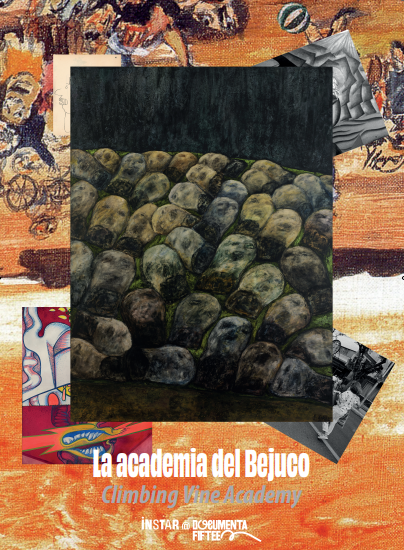
Duration: August 17th - August 27th 2022
Operators: Clara Astiasarán, Tania Bruguera, Ernesto Oroza
Artists in the exhibit: artists from the Art Brut Project Cuba archive / Samuel Feijóo / Antonio de la Guardia / Alberto Casado / Carlos Rodríguez Cárdenas (mural)
The title Academia del Bejuco comes from the name of an informal school of outsider artists founded and helmed by the Cuban folklorist Samuel Feijóo. To the latter, these outsiders were guided by an unrestrainable torrent of vegetal vitality, like the one that animates the persistent climbing vine. In a country with such strict measures of control over the freedom of expression, How much tolerance is granted to the delirium of the popular sketch artist? What ideas and messages of the outsider artist are tolerated by the political police on account of their “special condition”? Can the exceptional position of the naïve artist be occupied by other creators in order to gain a space of free expression? In this exhibit, we are putting into dialogue two perspectives on the legitimation of cultural production: On the one hand, the efforts of artists and researchers to recognize and validate popular art within the spaces of artistic legitimization. On the other, the efforts of politically dissident Cuban artists to denounce and challenge the processes of cultural disqualification that the government subjects them to. These repressive institutional strategies make use of traditional aesthetic criteria that correspond to mainstream conceptions which are, moreover, foreign. If this kind of censorship—based on aesthetic criteria—fails, the government treats their cultural production as a criminal act.
In this exhibit, we are including an archival project of art brut and works by four artists whose works have fed off of, or been related to, popular production. The Art Brut Project Cuba archive is directed by Samuel Riera and Derbis Campos. The role of the archive is to disseminate and facilitate the understanding of this cultural production by organizing exhibitions and workshops with the community, and by providing resources to artists and their families. We have brought an extensive selection from this archive to documenta fifteen. The other artists, who do not belong to the archive, are Samuel Feijóo, Antonio La Guardia, Alberto Casado, and Carlos Rodríguez Cárdenas. Samuel Feijóo was a poet, editor, publisher and precursor in the study and circulation of popular production in Cuba. His drawings emulate those of the popular creators that he championed in the pages of his legendary magazine Signos and in the exhibitions he organized. Antonio de la Guardia traveled extensively through Latin America thanks to his work as a high- ranking intelligence official of the Cuban government. His work was influenced by the cultural production of the regions in which he operated. De la Guardia was executed by the Cuban government as part of the famous Causa 1 of 1989. Alberto Casado has systematically used a vernacular technique found in precarious domestic spaces. Making his drawings on glass, he documents pivotal moments in Cuban culture which survive through oral history or rumor. His work is produced in a context where the devaluation and manipulation of historical memory is one of the functions of the cultural institutions of the government. For his part, Carlos Rodríguez Cárdenas employs a popular humor based on double entendre. This resource allowed him to elude censorship and put up—in public spaces—sarcastic messages that sought to desacralize the postures of the cultural apparatus and the ideological rhetoric of the government. His mural, Manera de Marchar Adelante (A Way Forward), located in the Plaza INSTAR for all 100 days of Documenta, is a facsimile of the mural painted by Cárdenas on the Avenida de los Presidentes in Havana at the end of the 1980s.
ROTILLA FESTIVAL
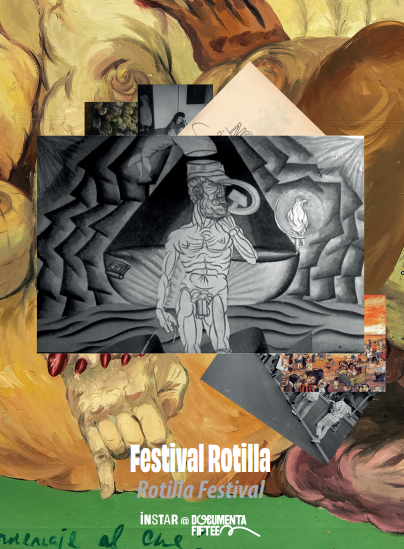
Duration: August 27th - September 5th 2022
Operators: Clara Astiasarán, Tania Bruguera, Ernesto Oroza
Guest operator: Michel Matos
Artists in the exhibition: Michel Matos (sotam) / Adrián Monzón (VjCuba) / Aminta D'Cárdenas / Hellman Avelle Soberón / Bárbaro Vargas (MC Urbano Vargas) / El Enano (MC Tattoo) / Enrique Maresma (Dj Kike Wolf) / Jack Yglesias (Jack Attack) / Jasek Manzano / Joyvan Guevara (DJoy de Cuba) / Roger Rizzo / Yoel Antonio Diéguez (DJ Wichy de Helado) / Carlos Michel Hernández / Gabriela Sánchez
This exhibition is a nod to the most significant independent music event in Cuba, the Rotilla Festival, which was censored and subsequently expropriated by the Cuban regime. The event was founded in 1998 by Michel Matos, Joyvan Guevara (DJoy de Cuba), and Carlos el Puro. Other producers and musicians joined or alternated in the years that followed.
More than a rave, the Rotilla Festival sought to attune young Cubans to what was happening on the music scene in the rest of the world, and at the same time to create spaces for freedom, coexistence, creative freedom, and restitution for musicians and artists that the regime censored or considered dissidents. Held on Rotilla Beach to the west of the capital, it was likely the first major independent endeavor to focus not only on music but also on fostering a space for emerging audiovisual production created within that context. Rotilla’s Elektro Stage was perhaps the most ambitious gathering place for the best music produced in Cuba (hip hop, reggaeton, rumba, electronic), as a hybrid space between the popular and the high-brow, between domestic and international musical production. Many powerful voices of Cuban alternative music of the late 20th and 21st centuries emerged from the Rotilla Festival, such as Los Aldeanos and Escuadrón Patriota, among others. The Festival also invited international artists who could sense that Cuba had finally overcome geography to align itself with the international production of its time. Artists, DJs, VJs and a general public (between 18 and 30 years old) gathered there for a weekend, establishing a community under the illusion of existing outside official surveillance, in tents and shelters created for the event and that responded to a particular typology born under the characteristics of this Festival, with materials that were reused and/or found in the surrounding nature.
“In the summer of 2011, the Rotilla Festival organizing team was informed by authorities representing the official culture sector that the festival ‘no longer has anything to do with you, it will be carried out by state institutions…’ and that was the start of a wave of censorship against the organizers and those in their personal and professional circles.” This is how Michel Matos, founder of the Rotilla Festival, describes the recurring exercise of the Cuban regime to engulf—in order to annihilate—any initiative that poses a threat to power under the premises of free will or free thought. Thus they expropriated the most visible and well-known platform for independent music.
This exhibition is meant to serve as a record, while also creating the conditions for a staging of the Rotilla Festival, incorporating the element of virtual space (by VjCuba) as recreation and immersion in the Rotilla experience. Many of the musicians, former band members, staff, and creators of the Rotilla Festival live in exile.
Among the main organizers of the festival are Michel Matos, Joyvan Guevara (DJoy de Cuba), Carlos el Puro, Lázaro González, Vanessa Portieles, Adrián Monzón (VjCuba), Arturo de la Fé, Didier Santos and Aminta D’Cárdenas.
UNDER CONSTRUCTION
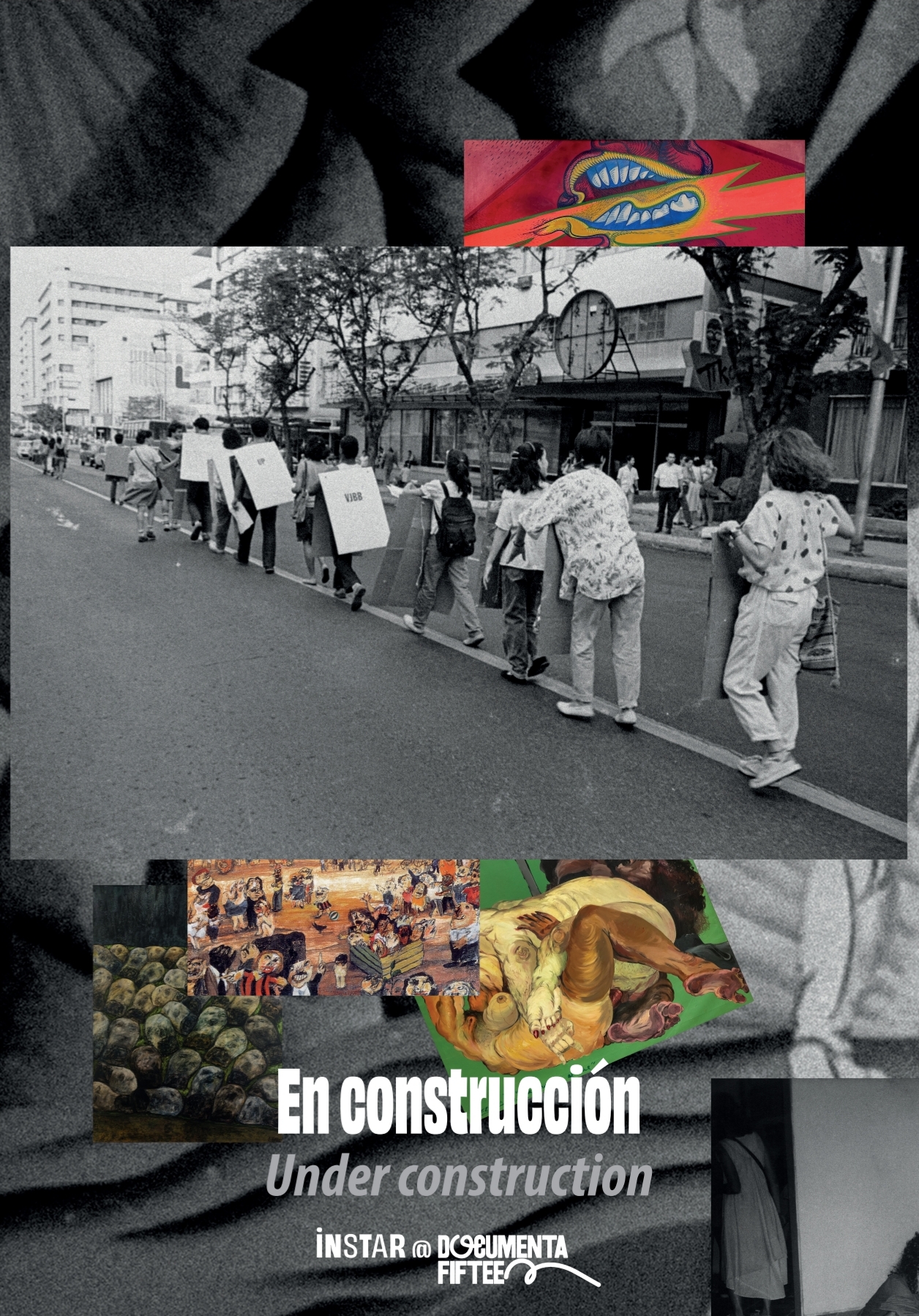
Duration:
Operators: Clara Astiasarán, Tania Bruguera, Ernesto Oroza
Theater groups and artists in the exhibition:
El Ciervo Encantado (Mariela Brito, Nelda Castillo, David Yasmany Varela , América Medina, Elena Llovet)/ Perséfone Teatro (Adonis Milán y Rainer Hernández)/ Teatro Kairós de LCPA (Lynn Cruz) /Teatro Obstáculo (Bárbara María Barrientos, Víctor Varela, Yaima Mena)/ Marianela Boán y Daymé del Toro.
This exhibition recognizes significant figures in Cuban independent theatrical production and performing arts, working on and off the island. Offering a critical look at autonomy within the performing arts in recent decades, the exhibition showcases continuous presentations by the invited groups and artists over ten days at the INSTAR space at Documenta. Each project functions independently, but their continuum demonstrates how theater and the performing arts that operate autonomously and/or completely independent of the state apparatus have become tools for shifting the cultural debate towards the political arena.
It is standard practice in Cuba to regulate, neutralize, and control the autonomy of theater groups through the State’s allocation of physical spaces (theaters, rehearsal space, etc.) per a restrictive legal framework that conditions the practice to a rigorous law of public acts. This law establishes a series of moral parameters, including any manifestation of a political nature against the government, which guarantees that all works undergo prior censorship by the cultural authorities before being presented to the public. Therefore, in Cuba, putting on theater outside the State is more than an act of resistance; it is a direct confrontation with the repressive forces of the regime. This project’s invited guests (actors, playwrights, theater critics and researchers) not only share the DNA of a production that was or is held outside the framework of officialdom—without its own spaces for production and/or distribution and often without the recognition of the island’s cultural institutions and/or authorities—but they are also considered political dissidents.
INSTAR
